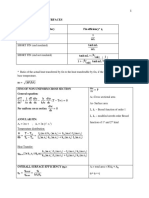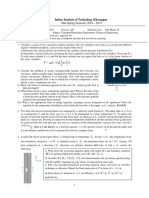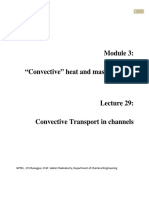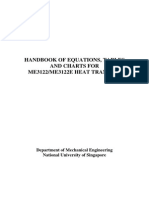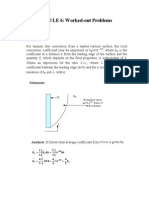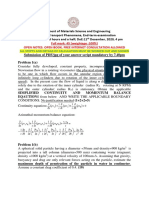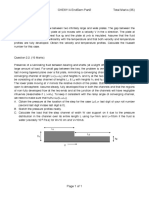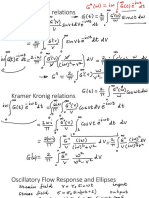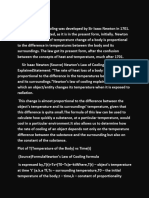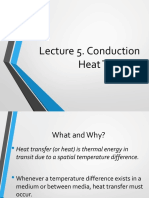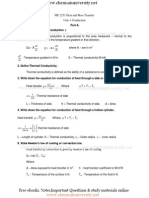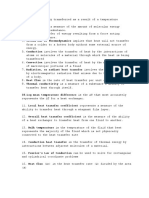0% found this document useful (0 votes)
88 views11 pagesTripathi: Transport Anurag Kanpur
This document discusses solving problems involving heat transfer in laminar flow through a tube with two independent variables using the energy balance equation. It describes nondimensionalizing the equation and applying boundary conditions to solve for the temperature profile. Asymptotic solutions are also discussed for small and large dimensionless axial positions. The Nusselt number relationship is defined in terms of the dimensionless temperature and Prandtl number.
Uploaded by
Pankaj Kumar SainiCopyright
© © All Rights Reserved
We take content rights seriously. If you suspect this is your content, claim it here.
Available Formats
Download as PDF, TXT or read online on Scribd
0% found this document useful (0 votes)
88 views11 pagesTripathi: Transport Anurag Kanpur
This document discusses solving problems involving heat transfer in laminar flow through a tube with two independent variables using the energy balance equation. It describes nondimensionalizing the equation and applying boundary conditions to solve for the temperature profile. Asymptotic solutions are also discussed for small and large dimensionless axial positions. The Nusselt number relationship is defined in terms of the dimensionless temperature and Prandtl number.
Uploaded by
Pankaj Kumar SainiCopyright
© © All Rights Reserved
We take content rights seriously. If you suspect this is your content, claim it here.
Available Formats
Download as PDF, TXT or read online on Scribd
/ 11



















